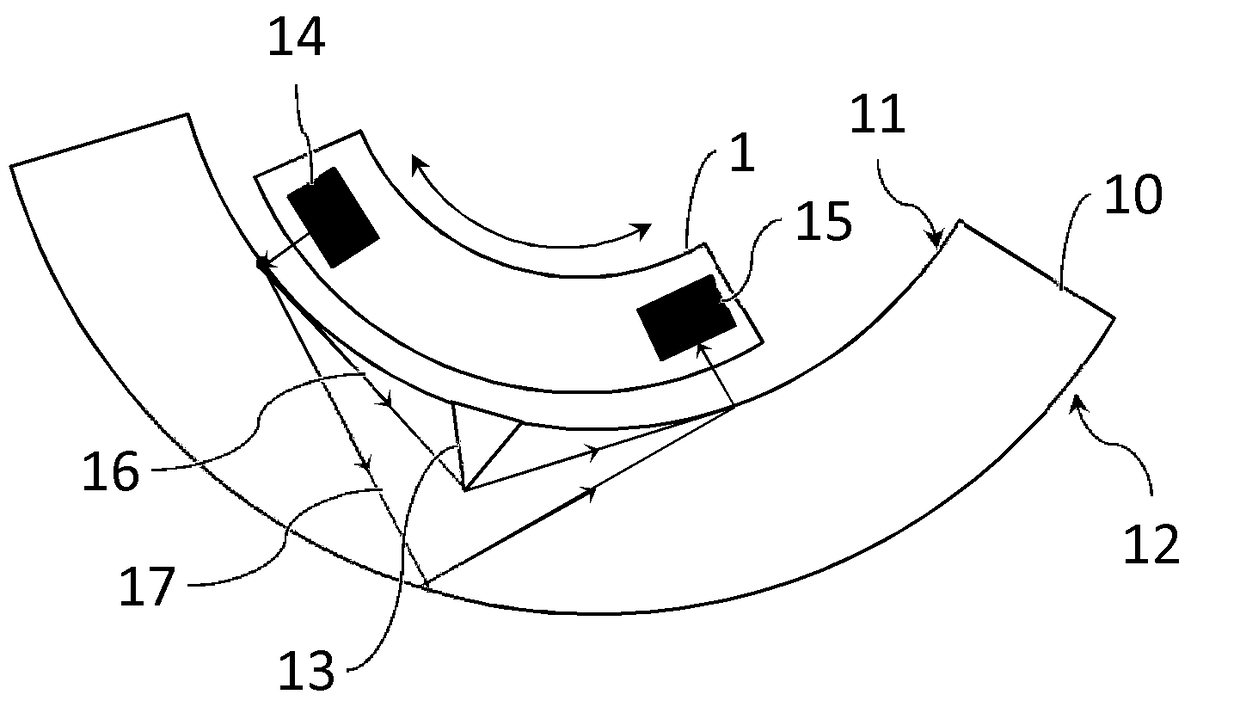Method for detecting and characterizing defects in a heterogenous material via ultrasound
a heterogeneous material and ultrasound technology, applied in the direction of analysing solids using sonic/ultrasonic/infrasonic waves, instruments, measurement devices, etc., can solve the problems of deterioration of the ability to detect the defects actually present in the material, conventional approaches to processing ultrasound signals, time or frequency filtering, deconvolution or wavelet-based projection turn out to be ineffective, and the method is not completely satisfactory. , to achieve the effect o
- Summary
- Abstract
- Description
- Claims
- Application Information
AI Technical Summary
Benefits of technology
Problems solved by technology
Method used
Image
Examples
Embodiment Construction
[0036]For illustration purposes, the following description will be made in the context of non-destructive testing of tubes for penetrating the bottom surface of a vessel of a nuclear reactor by means of ultrasonic transducers. Such a way of acquiring the transducer measurements is currently carried out, particularly to implement the technique of so-called Time of Flight Diffraction (TOFD), the acquisition protocol of which can be employed for the present invention.
[0037]The inspection of tubes for penetrating the bottom surface of a vessel of a nuclear reactor is subject to several constraints specific to the nuclear sector. Firstly, this environment is liable to cause premature ageing of materials, and secondly the consequences of a structural failure are such that any defects should be detected as soon as possible. Moreover, the accessibility of these penetration tubes is restricted to their interior, which makes it necessary to inspect the whole thickness of the tube from its int...
PUM
| Property | Measurement | Unit |
|---|---|---|
| frequency | aaaaa | aaaaa |
| frequency | aaaaa | aaaaa |
| wavelength | aaaaa | aaaaa |
Abstract
Description
Claims
Application Information
 Login to View More
Login to View More - R&D
- Intellectual Property
- Life Sciences
- Materials
- Tech Scout
- Unparalleled Data Quality
- Higher Quality Content
- 60% Fewer Hallucinations
Browse by: Latest US Patents, China's latest patents, Technical Efficacy Thesaurus, Application Domain, Technology Topic, Popular Technical Reports.
© 2025 PatSnap. All rights reserved.Legal|Privacy policy|Modern Slavery Act Transparency Statement|Sitemap|About US| Contact US: help@patsnap.com



